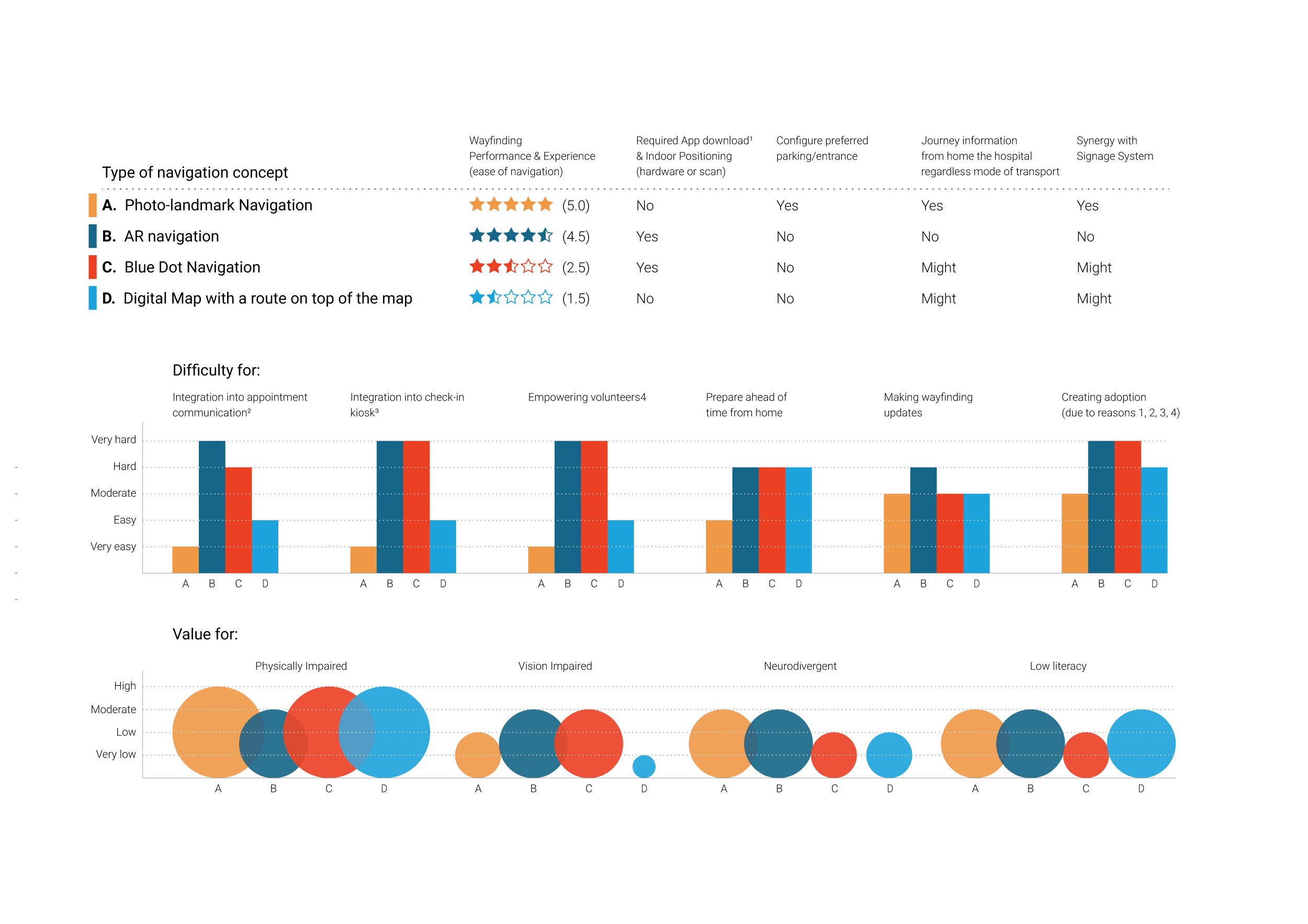Comparing Mobile Wayfinding Solutions and their Efficacy in Hospitals
Hospitals are rapidly embracing digital transformation, including advancements in patient communication. Patients now expect effective, personalized, and empathetic communication—essentially a retail-like experience. They're accustomed to handling transactions and arrangements online and anticipate the same convenience from healthcare providers.
A study conducted by a major hospital in the Netherlands revealed that most patients prefer digital communication regarding their appointments. Beyond details like time, date, and doctor, patients also want to know: where they need to be, where to park, which floor to go to, and detailed directions on how to reach their appointment. In short, there is a growing demand for precise wayfinding information. But how to pick the right solution?
The rising demand for digital wayfinding solutions is evident. Hospitals adopting "Digital Front Doors" as part of their IT strategies often see wayfinding as the most requested add-on. Similarly, when wayfinding issues become unmanageable, or during the construction of new hospitals, facilities management teams seek wayfinding designers, particularly for signage. In both IT and facilities management tenders, digital wayfinding is increasingly seen as a must-have and, in some cases, a knock-out factor to even qualify.
The challenge lies in the misconception that providing already a basic map is considered as “we offer wayfinding” by vendors. However, true wayfinding is far more complex and therefor very difficult for hospitals to evaluate accurately. What works? What doesn’t? It heavily depends on the specific problem being addressed and requires a deep understanding of human spatial cognitive processes. (see for example here how wayfinding solutions are created that don’t solve an existing problem)
Broadly, there are four types of pedestrian wayfinding methods used to help people navigate buildings:
Photo Landmark Navigation
Augmented Reality
Blue Dot Navigation
Indoor Maps (including predefined routes)
Not all methods are universally effective. What works for employees in a shopping mall does not necessary mean it will work for patients in a hospital. Success depends less on technical functionality and more on whether the solution addresses the cognitive problem at hand.
In a series of blog posts, we’ll explore these four wayfinding concepts and their application in hospitals. We’ll also share insights into the design decisions Eyedog has made over the past decade, which have resulted in a product currently used by patients in around 60 hospitals across Europe and the US.
Additionally, we’ll delve into the technology behind each method, aiming to provide a fair comparison of the systems and help stakeholders understand which solution suits their specific use cases.

